 Loading... Please wait...
Loading... Please wait...Free Shipping on orders over $500
Categories
Medical and Surgical Supplies Buyer’s Guide
Posted on 09/24/2018 11:40:51
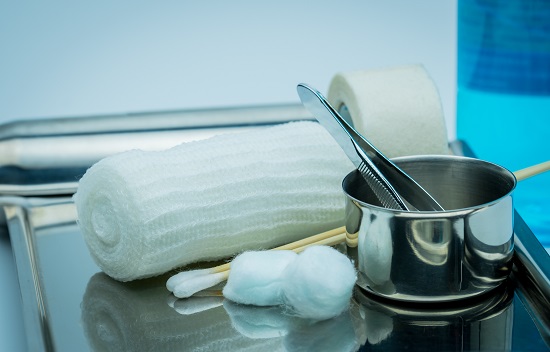
Whether you’re establishing a new health care office, replenishing existing medical surgical supplies, or upgrading outdated devices, you’re working on an important task. Making sure your office is well-stocked with medical and surgical supplies is a key step toward ensuring that your facility can provide the highest quality patient care and customer service. This guide is designed to help you make sound, medically appropriate decisions regarding the needs of your healthcare office.
Basic medical and surgical supplies every healthcare office should stock:
- Face Masks and Exam Gloves
- Bandages, Gauze, and Skin Adhesives
- Disinfectant Sprays, Wipes, and Hand Sanitizer
- Batteries
- Thermometers
- Stethoscopes
- Cotton-Tipped Applicators
- AED
- Tongue Depressors
- Penlights
- Otoscopes
- Exam Tables and Lights
- Scales
- Sterilization Equipment
- Needles and Syringes
- Vital Sign Monitors
- Blood Pressure Devices
- Surgical Sutures
- Biohazard Containers
- Suturing Materials
- Glucometers
- Hemoglobin Machines
Why Your Practice Needs These Medical and Surgical Supplies
Let’s take a look at each of the medical/surgical supplies listed above in a little more detail. No matter your specialty, location or market, these items should be part of any healthcare facility’s supply closet.
Face Masks and Exam Gloves
Medical face masks are very important to help prevent transmission of microbes throughout your practice and constitute a routine part of clinical protocol. Most facilities use fluid resistant face masks protecting the medical professions from exposure to blood and other body fluids. These masks are typically single-use only and it’s important to have plenty in stock. Making sure you’re well-stocked with these basics goes a long way toward protecting both your patients and your staff.
Masks also come in a variety of sizes, materials, and styles. While you want a mask to be comfortable, don’t let that be your only criterion; also consider its filtration efficiency before purchasing.
Face Mace Example: Medicom Medical Mask SafeMask Premier ASTM 1 Earloop Face Mask
Exam gloves are also critical to have available to protect medical practitioners. Because of latex allergies most exam glove manufactures have stopped producing latex exam gloves. Nitrile exam gloves and vinyl exam gloves are most widely used. Vinyl exam gloves are not as comfortable and not as flexibly and they cost less. Nitrile exam gloves are more comfortable and availability in a wide range of models. If your facility works with chemotherapy medications, you will want exam gloves that have been tested against chemotherapy medications.
The Halyard Health Purple Nitrile Exam Gloves are some of the most commonly used exam gloves in healthcare and they provide the highest level of chemotherapy protection available.

The Sempermed Synthetic Vinyl Exam Gloves are a popular vinyl exam glove for many facilities. These gloves provide a solution for professionals and their patients who are at risk of becoming sensitive to natural rubber latex
There are many styles of medical gloves from EMS gloves, exam gloves, to surgical gloves and are available in a variety of sizes and materials.
Bandages, Gauze, and Skin Adhesives
It’s important to have plenty of medical supplies on-hand to manage basic wound care. There’s a wide range of dressings on the market, which includes surgical skin glue like Dermabond. Dermabond is a medical skin adhesive used to glue the sides of an incision or injury closed. Dermabond has shown to improve healing rates, reduce the chances of an infection, and require less medical attention for the patient during recovery.
![]()
For everyday use, the Dermacea All Purpose Sponges Non-Woven Non-Sterile are widely used for a variety of situations.
Kerlix gauze sponges and bandages are also widely used throughout healthcare facilities.
Kerlix gauze sponges and bandage rolls are made with the highest chemical purity. Kerlix gauze is tested for blood-soluble cytotoxic chemical residue and they are tested for PH to minimize the risk of wound irritation and decomposition during use. Kerlix are also tested for dextran, starch, fatty matter, dyes and rayon to minimize risk of wound trauma. Kerlix gauze is also hypoallergenic and ideal for use as a primary and secondary wound dressing.
Disinfectant Sprays, Wipes, and Hand Sanitizer
Disinfecting medical equipment and patient areas is a very important factor to
prevent cross contamination. While the
protection provided by masks and gloves helps the medical staff, there is
always the need to disinfect medical equipment and patient areas. Fortunately
manufactures have developed very good disinfectants that are available several
convenient forms to use.
CaviWipes are a popular brand of disinfectant wipes. One benefit of CaviWipes is that they are a cleaner and disinfectant in one, preventing the need to purchase multiple products. These towelettes are also designed to kill many viruses in 5 minutes. CaviWipes are designed for use in each of the seven critical touch points in the healthcare facility: from surgery to housekeeping (waiting rooms, patient rooms, endoscopy, mobile equipment, sterile processing department, hallways, operating rooms).
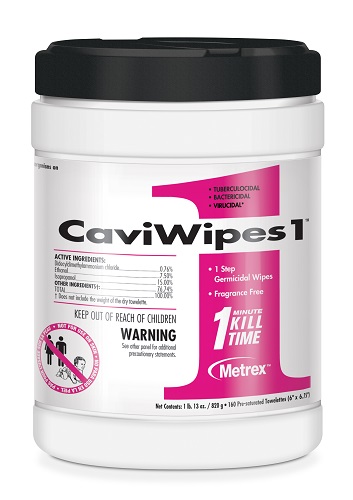
A widely used liquid spray disinfectant is Cavicide. CaviCide is a convenient, ready-to-use, intermediate-level surface disinfectant that is effective against TB, HBV, HCV, viruses (hydrophilic and lipophilic), bacteria (including MRSA and VRE) and fungi. It can be used in the NICU, operating rooms, isolation rooms, patient care areas and laboratories. When used as directed, CaviCide will also effectively clean and decontaminate critical and semi-critical instrumentation.
Hand hygiene is critical in any medical setting and is available in many forms such as gel, wipes, spray and soap. Hand sanitation products are generally used to decrease infectious agents on the hands. Formulations of the alcohol-based type are preferable to hand washing with soap and water in most situations in the healthcare setting. Most products are designed to kill germs without irritating the skin.
You can mitigate this by making sure you’re stocked with disinfectant sprays, wipes, and hand sanitizer. Be sure they are readily available and used regularly.
Batteries
While batteries are considered basic and non-medical supplies, they are important
when you consider the number of battery-powered medical devices and pieces of
equipment in your practice. It is a good habit to keep a running list of all
required
batteries and make sure you’re always
sufficiently stocked for all sizes.
Thermometers
One of the first things your staff will do when seeing a new patient is take
his or her temperature. You’ll want to make sure your facility has an adequate
supply of both digital and traditional thermometers, for taking temperatures
orally and via the ear. You might also want to select several different sizes
to accommodate both adults and children, and don’t forget the protective
sanitary sheaths.
Infrared and non-touch thermometers are the preferred models in most practices. The non-touch thermometers enable clinicians to take temperature without touching the patient. This provides optimal infection control and helps protect the medical team and patients. It is designed for ease of use to support optimal nurse efficiency and reduce cost with no consumables or waste. Another benefit of the non-touch models is that no expensive probe covers or consumables are necessary. The LinkTemp non-contact infrared thermometer provides and instant and accurate way for clinicians to take temperature without contact in a multi-patient environment where efficacy, accuracy and efficiency matter every day. LinkTemp is a professional grade thermometer that measures body (forehead), surface and room/ambient temperature instantly and accurately. The LinkTemp Non-contact Infrared Thermometer can be used as a non-invasive screening tool in a multi-patient environment.
Stethoscopes
Another basic medical supply,
stethoscopes come in a
variety of sizes and a range of functionality from simple to those with extra
bells and whistles like digital recording. You may want to consider purchasing
a model that includes a lifetime warranty.
The stethoscope is one of the most commonly used medical instruments. A stethoscope is an amazing instrument that used to non-invasively listen to the internal sounds of the human body including heart, lungs, intestines, and veins/arteries. The disc-shaped resonator is positioned against the part of the body that is being examined and the earpieces placed in the healthcare provider’s ears. The rubber tubing transmits the audible sounds. A stethoscope can be combined with a sphygmomanometer to measure blood pressure.
Below is information highlighting some commonly used and advanced stethoscopes.
3M Littmann Classic II stethoscopes come in a dozen different colors and are value priced at under $100. Accessories like soft-sealing eartips and identification tags can be added to further personalize each stethoscope beyond the rainbow of available options. The 3M Littmann Electronic Stethoscope 3200 combines Ambient Noise Reduction technology and frictional noise dampening features with amplification, Bluetooth® technology, and an all-new user interface, for the next level of performance and ease of use.
ADC offers several options like the Adimals 618 Platinum Stethoscope with snap-on animal faces and the classic Adscope 606 Ultra-Light Cardiology Stethoscope that provides superior performance at a fraction of the weight. ADC even offers disposable one-time use stethoscopes like the ADC Disposable Stethoscope Proscope 664 .
The Welch Allyn Harvey Elite offers updated styling along with the superior comfort and auscultation capabilities that cardiologists have come to rely on. It is equipped with dual-bore tubing that creates two uninterrupted sound channels and works with the optimally weighted, rugged, and stainless steel chest pieces. In addition, the Elite's diaphragm is designed to accentuate important sounds all this enables you to hear cardiac, pulmonary and vascular sounds. The Welch Allyn Harvey DLX Stethoscope has a Double Head and a Triple Head option.
Cotton-Tipped
Applicators
These items are essential in any facility as well. For everything from strep
tests to applying topical anesthetics,
cotton applicators are a must for
any practice.
AED (Automated External Defibrillator)
The National Heart, Lung,
and Blood Institute describes defibrillators as “devices that restore a normal
heartbeat by sending an electric pulse or shock to the heart. They are used to
prevent or correct an arrhythmia, a heartbeat that is uneven or that is too
slow or too fast. Defibrillators can also restore the heart’s beating if the
heart suddenly stops.” Defibrillators
are also known as Automated External Defibrillator (AED), Implantable
Cardioverter Defibrillator (ICD),
Wearable Cardioverter Defibrillator (WCD).
Anyone in your practice, including your staff, can fall victim to sudden cardiac arrest, making AEDs one of the most important medical/surgical supplies you can have. In fact, an easily accessible AED can literally make the difference between life and death. The automated defibrillator is designed for use by everyday people and provides guided instructions for immediate treatment of cardiac arrest.
Tongue Depressors
These thin wooden blades are a key medical supply for any health care practice. They allow health care professionals to press down the tongue so it doesn’t block a clear view of the mouth and throat during an examination. You should always have plenty on-hand.
Penlights
All types of doctors – from surgeons to dentists – use penlights during exams, chiefly because of their convenient size. They can be used to gauge pupil response, inspect wounds and examine areas of the mouth and throat. The pen light is essentially a small flashlight light by a LED bulb. The pen light is used most frequently during eye, ear, nose and throat examinations. Bovie Medical manufactures several very popular models of penlights in both disposable or permanent styles.
Otoscopes
Otoscopes help a physician get a clear view of the ear canal, including the tympanic membrane and eardrum. Wall-mounted and portable versions give you some choice when placing an order, and otoscope heads are something you should seriously consider. The type of head you choose will significantly impact both cost and functionality. Luckily, most otoscope handles are designed to fit multiple heads, so your team can switch them out as appropriate.
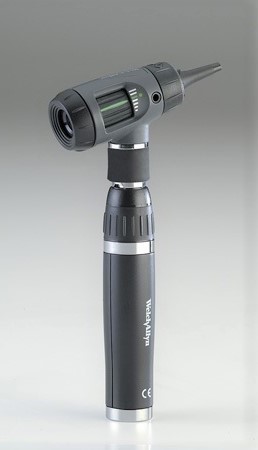
Exam Tables and Lights
Your patients will spend a good portion of their time on exam tables, so it’s important to make sure they’re comfortable and easy to adjust. You can choose from a wide selection of exam tables to match your patient population, your budget, size of exam room, and the procedures typically performed at your practice.
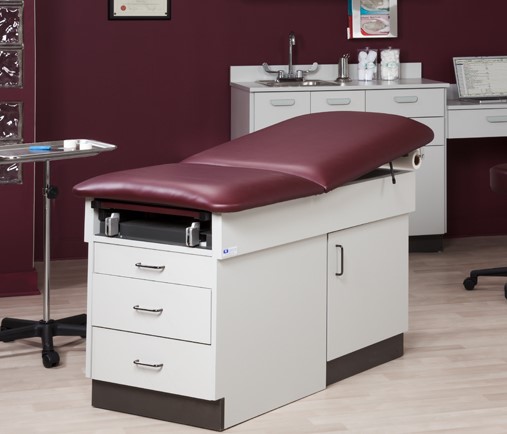
Medical lighting reduces shadows over the procedure area and provides the surgical team with accurate bright lighting for surgeries. For exams, good exam lights are important for an accurate evaluation and diagnosis. Surgical lights and exam lights and can be purchased on caster bases or mounted in several ways. LED, halogen, and incandescent lighting options are available, depending on your specific applications and budget.
Scales
Scales should be accurate and durable and preferably offer digital readings. Every patient who walks into your health care center will need to be weighed, so make sure to choose a model appropriate for all mobility levels and can accommodate a high weight capacity.
Sterilization Equipment
Sterilization of medical instruments and supplies is essential for reducing and eliminating contamination and infection. Many of your medical tools can be reused, so choosing appropriate sterilization equipment, supplies and processes is imperative.
An autoclave is a machine that utilizes the power of hot steam to kill bacteria, spores and germs that are otherwise resistant to other disinfectant methods. Autoclaves come is a wide variety of sizes and functionality. Regulated medical waste that might contain bacteria, viruses and other biological material are recommended to be inactivated by autoclaving before disposal. There are many supplies and devices that work in conjunction with the autoclave machine such as disposable bags, tape, electronic pencil and forceps. It is important when purchasing these devices, they are compatible with the specific autoclave model in the office.
Needles and Syringes
No medical/surgical supply stock would be complete without syringes – for irrigation, fluid removal or injections. Depending on the variance of treatment in your practice, you may need several different sizes and types. Syringes can be fitted with needles for injections, while those used for fluid removal can pair with needles or medical tubing, so you’ll need to stock those as well. Medical-grade syringes are made of plastic or glass. The see-through quality allows for more accurate dosing. Of course, plastic syringes are disposable, while glass syringes can be sterilized after each use and reused as appropriate.
Vital Sign Monitors
Vital signs monitors are widely used medical devices that provide the most common assessment done on every patient who enters a medical setting. Heart rate or pulse, breathing rate or respiratory rate, temperature, blood pressure, oxygen saturation, heart rhythm, and brain waves can all be measure by individual devices, tools, or machines. Some of these are blood pressure cuffs, pulse oximeters, fetal heart rate monitoring, EEGs, and EKGs. The earliest combined monitors came as a result of the need for monitoring patients during anesthesia. These monitors record and store thousands of pieces of data and show patient status in real time. Vital sign monitors today are outfitted with all sorts of warning sounds and visuals alerting medical personnel to changes in a patient's vital signs. Nurses and doctors routinely employ their use especially in critical care settings where physiologic responses can occur suddenly and unpredictably.
Vital sign monitoring is usually the first thing that happens when a patient enters a healthcare setting. Vital signs provide important information to doctors, nurses and emergency responders so they can quickly make healthcare decisions for their patients. Vital signs include blood pressure, respiration, pulse, pulse oximetry, temperature and vital sign variability. Options are wide, varied and complex – to learn more visit our vital signs monitor buyer’s guide.

Blood Pressure Devices
Depending on your particular needs, you can choose from a variety of blood pressure devices. How your staff will use them can help you determine what style you need, particularly whether you should stock handheld, wall-mounted or both. It’s also a good idea to have several different types of cuffs on your monitors so you can easily find a good fit for each patient.
Biohazard Containers
ffective disposal of biohazards, including sharps such as needles, IVs, and lancets, is important to keep your staff and patients safe, and also to avoid costly fines. When choosing a proper biohazard disposal system, many factors enter into play, including your practice logistics, layout, practices and safety protocols. OSHA guidelines also drive standards of performance and design, as well as facility practice. For example, sharps disposal containers must be closable, puncture resistant, leak-proof and easily accessible.
Surgical Sutures
Surgical sutures come
in four basic types: absorbable braided, non-absorbable braided, absorbable monofilament,
and nonabsorbable monofilament. You’ll want to make sure you have plenty of sutures available for
a wide variety of procedures to make sure
your practice is well equipped to handle any kind of wound or injury.
Glucometers
These small, computerized medical devices measure and display blood glucose level, most commonly for people with diabetes. Hospital-grade glucometers are different from the portable glucometers used by patients at home and are not available in the open market. The methods used for the estimation of blood glucose levels are similar in both the hospital-based and outpatient glucometers. However, hospital-based glucometers are designed to measure various other characteristics such as temperature, hematocrit, pH, hyperlipidemia, humidity, oxygenation, etc.
Hemoglobin Machines
These essential medical devices are used to track the level of hemoglobin (red blood cell protein) in the blood. Besides typical office/practice versions, they are also available in portable options that can be used by visiting nurses, medical assistants, EMS personnel and other health care professionals that need portable and reliable medical equipment.
Specialty Medical and Surgical Supplies
Many patients require specialty or ambulatory care centers for particular health care needs, which vary widely in the services they provide – covering everything from women’s health to long-term and post-acute care. Often, meeting the supply needs for specialty medical centers can be a challenge. Offering convenience and state-of-the-art equipment is a huge draw to these centers. That means careful planning is in order to deliver on this promise.
As a procurement leader, you must make solid, well-researched choices about the medical and surgical supplies you purchase in order to meet your patients’ needs and avoid wasting valuable resources. Below are a few specialty items each of these centers may want to stock.
Surgery Centers
- Surgical Lights
- Custom Surgical Instruments
- ECG Machine
- IV Materials
Diagnostic Imaging Centers
- Radiation Protection
- MRI
- CT Scanners
- Mammography
- Digital X-ray Equipment
- Ultrasound
Long-Term Care Facilities
- Fall Management Equipment
- Safe Handling and Patient Transfer
- Aids for Daily Living
- Pressure-Ulcer Prevention
Physical Therapy and Rehabilitation Facilities
- Mobility Equipment
- Rehab Positioners
Orthopedic Centers
- Insoles
- Splints and Braces
- Ankle and Foot Orthoses
Detailed Medical and Surgical Supplies for Specialty Practices
Now let’s look a little more closely at some of the needs and services of particular specialty healthcare facilities, so you can make well-informed purchasing decisions.
Surgery Centers
These healthcare facilities offer patients the opportunity to have surgical procedures outside of a hospital setting. You’ll want to consider a few specific medical/surgical supply needs specific to these center.
Surgical Lights
Selecting the best surgical lighting for your budget and needs can be tricky. Below are a few tips, but if you need more in-depth information, you can find additional guidance and resources in the surgical lights buyer’s guide devoted to finding the right surgical lights.
There are many options to choose from and advancements in technology help the surgeon and surgical team operate with a high level of visibility. Improved brightness, better light color, and lower heat are several benefits that improve the operating room environment and help the surgical team. Important considerations when choosing surgical lighting include luminance, color, heat level (the lower, the better) and ease of use.
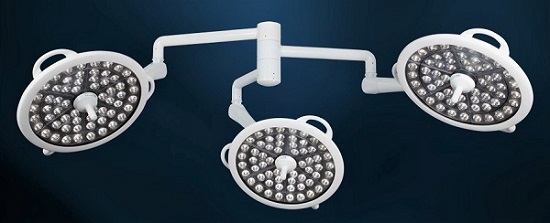
Custom Surgical Instruments
Surgical instruments can present a challenge since they often have no standard names. This surgical equipment category keeps growing and currently comprises everything from surgical drapes to skin preparation and surgical blades.
You’ll need to get specific and detailed direction from your knowledgeable staff in order to make sure you’re ordering and stocking the best instruments for their needs, organized by function and purpose.
ECG machines
There are two types of tests most commonly used to determine heart health - electrocardiogram (ECG/EKG) and echocardiogram. Traditionally these tests are conducted if a patient complains of chest pains or if a physician detects abnormal heart rhythm. In German, electrocardiogram is translated into elektro-kardiographie so the term ECG and EKG are synonymous.
Electrocardiogram (ECG) machines monitor the electrical activity of the heart and is performed by an ECG/EKG technician. Echocardiogram uses ultrasound to create a visual image of the heart and is performed by an Ultrasound Technologist or Sonographer.
The ECG test is usually performed first. If any abnormal results are apparent on the ECG, the cardiovascular physician will order the Echocardiogram. The ECG test is performed by placing small adhesive electrodes on various parts of the body. The ECG machine translates the electrical activity into a series of waves on paper. This is a safe and pain-free test that can potentially identify a multitude of cardiovascular issues.
Electrocardiogram machines monitor electrical activity of the heart, using ultrasound to create a visual image of the heart. ECG machines can help diagnose a number of conditions ranging from an enlarged heart or irregular heartbeat to heart attack. As with many items, a variety of models is available, so you can choose the one that best fits your practice and its patient needs.
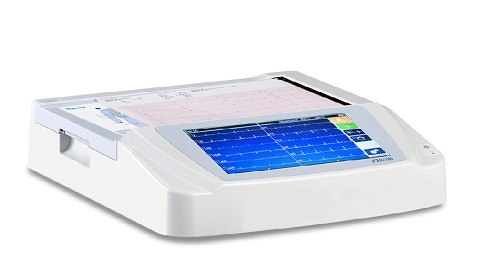
IV supplies
Administering medications intravenously requires a selection of specialized equipment , ranging from catheters and bags to rolling stands.
IV poles are commonly used throughout medical facilities. IV poles are very important because they hold medications and fluids used in intravenous therapies. IV poles provide patient mobility to move about the medical facility without interrupting intravenous medical therapies. Most IV poles are designed with a metal pole on a weighted base with wheels that is topped with a set of hooks. The weighted base and wheels provide stability and maneuverability, allowing patients to move without restriction.
The majority of IV poles allow height adjustability to promote ideal fluid transmission. The number of hooks on the pole determines the number of fluid bags that can be hung simultaneously. Although many products appear similar, IV poles have variations and functional differences in regards to wheel base, hooks, pole height and accessories.
Diagnostic Imaging Centers
A broad selection of medical imaging supplies can help your practice meet the demands of medical imaging in today's fast-moving healthcare market. Some of these are capital-heavy investments and major purchases for your practice, so you’ll want to discuss thoroughly with your team. Evaluate the equipment’s ability to provide a sound return on investment based on your patient load and demonstrated need for these larger pieces.
Radiation Protection
Personal radiation protective equipment is mandatory to protect both your patients and your team. A wide range of options is available, including eyewear, collars, vest/skirt combinations, and aprons.
MRI
Magnetic resonance is a complex technology and a major investment should your practice choose to purchase one. Technology is such that today, MRI equipment can offer everything from motion-free 2D/3D imaging to cardiac and vascular imaging.
CT Scanners
There are several key points to consider when evaluating CT scanners. For example, patient volume, coverage area versus slices, cardiac CT considerations and rotation speed come to mind.
Mammography
In general, pricing for a digital mammography system depends on the functionality and configuration your team needs. You might want review workstations, computer-aided detection (CAD), tomosynthesis, contrast-enhanced spectral mammography (CESM), and upright biopsy components, but you’ll need to be prepared that these options will raise the ultimate cost of the equipment.
Digital X-Ray Equipment
Rather than traditional film or cassettes, digital X-ray uses flat panel detectors that improve image quality and diagnosis – all while lowering radiation exposure to both patients and staff. And it’s remarkably fast. You can review a digital X-ray within seconds, which increases your team’s speed and efficiency, and also peace of mind for patients.
Ultrasound Equipment
Functionality, ease of use and cost are the three main considerations when buying an ultrasound machine. The ease-of-use piece will be especially important to your team. Many of today’s machines even come with presets for common procedures, making them incredibly intuitive and allowing your team to complete scans without the need to adjust separate dials.
Long-Term Care Facilities
If you’re stocking medical supplies for a long-term care facility, skilled nursing facility or nursing home, you’ll need to consider specific items for both medical and personal care of your patients.
Fall Management Equipment
A few simple medical supplies can help your staff improve patient safety and elevate the overall quality of care by minimizing the risk of falls and serious resulting injuries. For example, both sensors and fall alarms are easy to use and quickly let someone know when a patient tries to leave a room, bed or chair so that they can offer assistance.
Safe Handling and Patient Transfer
Giving your team proper medical supplies is key to ensuring compliance. Investment in appropriate equipment can reduce injury risk for both patients and staff, decrease worker’s compensation claims and reduce turnover. Some effective patient transfer options include gait belts, transfer belts, and patient transfer boards.
Aids for Daily Living
A wide selection of high-quality ADLs is available in the market to promote patient independence. These items can assist with dressing, grooming, dining, toileting, bathing, homemaking and leisure. Reachers, medication aids, dressing aids, self-transfer aids, reading, writing, computing aids, household kitchen aids and hygiene aids are a few basic items to consider stocking for your practice.
Pressure-Ulcer Prevention
Pressure ulcers are a major concern for long-term care facilities. In fact, according to the Agency for Healthcare Research and Quality, pressure injuries affect approximately 2.5 million U.S. patients each year. Special cushions, mattresses, and pads afford a level of pressure management that can reduce the potential of pressure ulcers.
Physical Therapy and Rehabilitation Facilities
To help your team better assist patients learning to cope with losses in physical function through the use of therapeutic exercises and activities, you’ll need to stock a few special medical supplies.
Mobility Equipment
Crutches, canes, and walkers for a wide variety of mobility needs, comfort, and patient preferences are must-haves for these facilities. You’ll see patients along a spectrum of physical ability, and the better able you are to accommodate them, the more compliant with therapy they are likely to be.
Rehab Positioners
Foam positioners help situate limbs by keeping ankles or knees separated or heels elevated from a bed surface. A wide selection of products is available to provide support to weakened or injured limbs and aid recovery. Body aligners, knee lifts, leg rests, foot drop stirrups and stops, heel raisers, knee wedges, and arm and leg positioners are just a few options to consider.
Orthopedic Centers
As these centers help patients with conditions of the musculoskeletal system, they call for their own unique medical/surgical supplies in order to ensure the highest level of patient care.
Insoles
Orthotics, pediatric insoles, diabetic and arthritis insoles are must-have supplies to have on hand for just about any orthopedic patient.
Splints and Braces
You’ll want to stock a variety of braces for knees, calves, shins, and ankles, along with those for shoulders, wrists, carpal tunnel support, wrist wraps, and immobilizers. Make sure to stock sizes appropriate for pediatric patients, as statistics show pediatric sports injuries are on the rise. In fact, according to Johns Hopkins Medicine, more than 3.5 million children age 14 and younger are injured every year playing sports or other recreational activities.
Ankle and Foot Orthoses
Your practice will need a wide selection of sizes and materials. Choose options that fit your patients’ needs, including models that help move them through the full gait cycle, out-of-shoe styles for those who can’t tolerate in-shoe devices, low-profile options, and options that will work with or without shoes.
Choose a Supplier You Can Trust
The right medical and surgical supply purchasing practices can help your healthcare facility run like a well-oiled machine. Before buying, you’ll want to do careful research, assess your team’s needs and only purchase medical supplies and equipment from a source you trust.
You don’t have to do this alone. If you’d like more information or to speak to a sales representative, call us at 1-866-561-2380 or Contact Us. We can help you develop and implement a solid, cost-effective procurement plan tailored to your practice’s specific needs.



